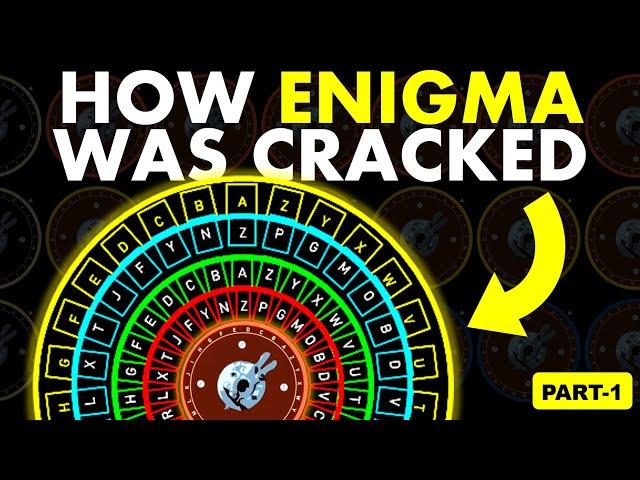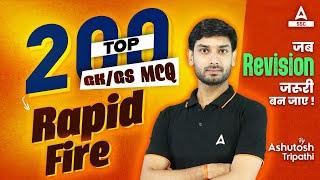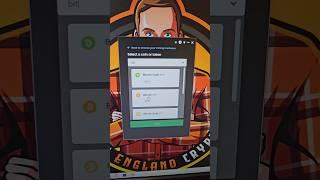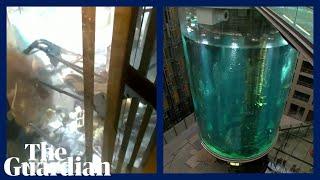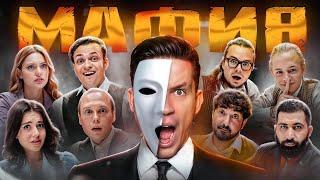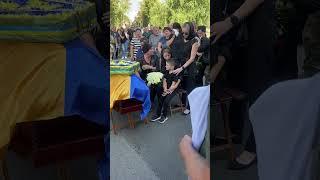Комментарии:

The Bombay machine
Ответить
thank you
Ответить
Very cool! Very accessible presentation!
What did you use to create the animations for this series if I may ask?

A well put together and clear explanation. Many thanks for doing the work👍
Ответить
Bombe .NE. "Bombay"
Ответить
Couldn't listen to the voice for very long
Ответить
Not going to listen for almost 20 minutes to bad computer narration. I turned this video off when it said letteree instead of Letter E.
Ответить
Synthetic voices are boooooooring listen to.
Ответить
Credit also to Tommy Flowers and his team of GPO engineers. This was a team effort by all the allies in WW2. Credit also to our brave Polish allies.
Ответить
The speaker audio is like a robot! Please let a real person speak or don't affect the sound. Thank you for the great video
Ответить
Main facts (in short);
Cryptanalysis of the Enigma ciphering system enabled the western Allies in World War II to read substantial amounts of Morse-coded radio communications of the Axis powers that had been enciphered using Enigma machines. This yielded military intelligence which, along with that from other decrypted Axis radio and teleprinter transmissions, was given the codename Ultra.
The Enigma machines were a family of portable cipher machines with rotor scramblers.
Good operating procedures, properly enforced, would have made the plugboard Enigma machine unbreakable.
The German plugboard-equipped Enigma became the principal crypto-system of the German Reich and later of other Axis powers. In December 1932 it was "broken" by mathematician Marian Rejewski at the Polish General Staff's Cipher Bureau, using mathematical permutation group theory combined with French-supplied intelligence material obtained from a German spy. By 1938 Rejewski had invented a device, the cryptologic bomb, and Henryk Zygalski had devised his sheets, to make the cipher-breaking more efficient. Five weeks before the outbreak of World War II, in late July 1939, at a conference just south of Warsaw, the Polish Cipher Bureau shared its Enigma-breaking techniques and technology with the French and British.
During the German invasion of Poland, core Polish Cipher Bureau personnel were evacuated via Romania to France, where they established the PC Bruno signals intelligence station with French facilities support. Successful cooperation among the Poles, the French, and the British at Bletchley Park continued until June 1940, when France surrendered to the Germans.
From this beginning, the British Government Code and Cypher School (GC&CS) at Bletchley Park built up an extensive cryptanalytic capability. Initially the decryption was mainly of Luftwaffe (German air force) and a few Heer (German army) messages, as the Kriegsmarine (German navy) employed much more secure procedures for using Enigma. Alan Turing, a Cambridge University mathematician and logician, provided much of the original thinking that led to upgrading of the Polish cryptologic bomb used in decrypting German Enigma ciphers. However, the Kriegsmarine introduced an Enigma version with a fourth rotor for its U-boats, resulting in a prolonged period when these messages could not be decrypted. With the capture of cipher keys and the use of much faster US Navy bombes, regular, rapid reading of U-boat messages resumed.
In the 1920s the German military began using a 3-rotor Enigma, whose security was increased in 1930 by the addition of a plugboard. The Polish Cipher Bureau sought to break it due to the threat that Poland faced from Germany, but its early attempts did not succeed. Near the beginning of 1929, the Polish Cipher Bureau realized that mathematicians may make good codebreakers; the bureau invited math students at Poznań University to take a class on cryptology. After the class, the Bureau recruited some students to work part-time at a Bureau branch set up in Poznań for the students. The branch operated for some time. On 1 September 1932, 27-year-old Polish mathematician Marian Rejewski and two fellow Poznań University mathematics graduates, Henryk Zygalski and Jerzy Różycki, joined the Bureau full-time and moved to Warsaw.
Their first task was to reconstruct a four-letter German naval cipher.
Near the end of 1932 Rejewski was asked to work a couple of hours a day on breaking the Enigma.
Rejewski's characteristics method.
Marian Rejewski quickly spotted the Germans' major procedural weaknesses of specifying a single indicator setting (Grundstellung) for all messages on a network for a day, and repeating the operator's chosen message key in the enciphered 6-letter indicator. Those procedural mistakes allowed Rejewski to decipher the message keys without knowing any of the machine's wirings. In the above example of DQYQQT being the enciphered indicator, it is known that the first letter D and the fourth letter Q represent the same letter, enciphered three positions apart in the scrambler sequence. Similarly with Q and Q in the second and fifth positions, and Y and T in the third and sixth. Rejewski exploited this fact by collecting a sufficient set of messages enciphered with the same indicator setting, and assembling three tables for the 1,4, the 2,5, and the 3,6 pairings. Each of these tables might look something like the following:
First letter
ABCDEFGHIJKLMNOPQRSTUVWXYZ
Fourth letter
NSYQTICHAFEXJPULWRZKGOVMDB.
A path from one first letter to the corresponding fourth letter, then from that letter as the first letter to its corresponding fourth letter, and so on until the first letter recurs, traces out a cycle group.
The following table contains six cycle groups.
Cycle group starting at A (9 links)
(A, N, P, L, X, M, J, F, I, A)
Cycle group starting at B (3 links)
(B, S, Z, B)
Cycle group starting at C (9 links)
(C, Y, D, Q, W, V, O, U, G, C)
Cycle group starting at E (3 links)
(E, T, K, E)
Cycle group starting at H (1 link)
(H, H)
Cycle group starting at R (1 link)
(R, R).
Rejewski recognized that a cycle group must pair with another group of the same length. Even though Rejewski did not know the rotor wirings or the plugboard permutation, the German mistake allowed him to reduce the number of possible substitution ciphers to a small number. For the 1,4 pairing above, there are only 1×3×9=27 possibilities for the substitution ciphers at positions 1 and 4.
Rejewski also exploited cipher clerk laziness. Scores of messages would be enciphered by several cipher clerks, but some of those messages would have the same encrypted indicator. That meant that both clerks happened to choose the same three letter starting position. Such a collision should be rare with randomly selected starting positions, but lazy cipher clerks often chose starting positions such as "AAA", "BBB", or "CCC". Those security mistakes allowed Rejewski to solve each of the six permutations used to encipher the indicator.
That solution was an extraordinary feat. Rejewski did it without knowing the plugboard permutation or the rotor wirings. Even after solving for the six permutations, Rejewski did not know how the plugboard was set or the positions of the rotors. Knowing the six permutations also did not allow Rejewski to read any messages.
Before Rejewski started work on the Enigma, the French had a spy, Hans-Thilo Schmidt, who worked at Germany's Cipher Office in Berlin and had access to some Enigma documents. Even with the help of those documents, the French did not make progress on breaking the Enigma. The French decided to share the material with their British and Polish allies. In a December 1931 meeting, the French provided Gwido Langer, head of the Polish Cipher Bureau, with copies of some Enigma material. Langer asked the French for more material, and Gustave Bertrand of French Military Intelligence quickly obliged; Bertrand provided additional material in May and September 1932.
The documents included two German manuals and two pages of Enigma daily keys.
In December 1932, the Bureau provided Rejewski with some German manuals and monthly keys. The material enabled Rejewski to achieve "one of the most important breakthroughs in cryptologic history" by using the theory of permutations and groups to work out the Enigma scrambler wiring.
Rejewski could look at a day's cipher traffic and solve for the permutations at the six sequential positions used to encipher the indicator. Since Rejewski had the cipher key for the day, he knew and could factor out the plugboard permutation. He assumed the keyboard permutation was the same as the commercial Enigma, so he factored that out. He knew the rotor order, the ring settings, and the starting position. He developed a set of equations that would allow him to solve for the rightmost rotor wiring assuming the two rotors to the left did not move.
He attempted to solve the equations, but failed with inconsistent results. After some thought, he realized one of his assumptions must be wrong.
Rejewski found that the connections between the military Enigma's keyboard and the entry ring were not, as in the commercial Enigma, in the order of the keys on a German typewriter. He made an inspired correct guess that it was in alphabetical order.
Britain's Dilly Knox was astonished when he learned, in July 1939, that the arrangement was so simple.
With the new assumption, Rejewski succeeded in solving the wiring of the rightmost rotor. The next month's cipher traffic used a different rotor in the rightmost position, so Rejewski used the same equations to solve for its wiring. With those rotors known, the remaining third rotor and the reflector wiring were determined. Without capturing a single rotor to reverse engineer, Rejewski had determined the logical structure of the machine.
The Polish Cipher Bureau then had some Enigma machine replicas made; the replicas were called "Enigma doubles".

In 1932 a team of young mathematicians from the University of Poznań POLAND was set up. Among them were the main code breakers Marian Rejewski, Jerzy Różycki and Henryk Zygalski. It was Rejewski who first cracked the Enigma code, in only ten weeks... during the war, the Poles gave the French and the British a copy of the Enigma Machine built by them, ... after the war, the English took all the credit for themselves ...
Ответить
It was NO(!) ‘’genius’’ of Alan Turing that cracked Enigma. It was Polish mathematical geniuses Marian Rejewski, Jerzy Rozycki and Henryk Zygalski who cracked Enigma. No American nor British did that. Get your history straight.
Ответить
First learn how to pronounce Bombe if you wish to impress!!
Ответить
Alan Turning only expanded on plans supplied by Polish mathematicians who supplied the full working enigma machine and plans of how the bombe was to be build (there was no time for Poles to developed as the country was overrun by Germans).
Ответить
I taught myself c# and my first project to get to work was an enigma simulator!
Ответить
This video is rubbish not only by weird machine text to speech. But also in first minutę is making critical mistake . Enigma was not cracked in Bletchley Park. Enigma was cracked in Polish Cipher Bureau. British got the ready solution from poles shortly before war started including early version of cracking machines.
Ответить
Your way of teaching was so admirable ,even my professor was unable to teach this topic in the way you taught us!
Thank you so much for this❤

The correct pronunciation is Bombe. Sorry for the mistake. 🤕
Ответить
It's Bomb, NOT bombay.
You tackle the subject well but sound ridiculous with the miss pronunciation!
Just go to any other video about Enigma to hear it spoken correctly.
